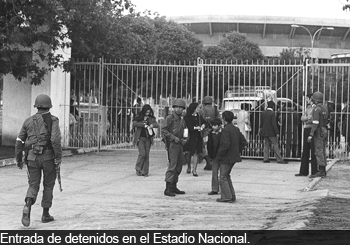Presidents, Parties, and Democratic Breakdown
Carlos Pereira and Marcus André Melo, "The Surprising Success of Multiparty Presidentialism." Journal of Democracy 23, 2 (July 2012): 156-170.
Abstract (gated):
The common wisdom is that when presidential political systems coincide with multiparty systems the result is gridlock; parties squabble and presidents are not able to stitch together the majorities they need to move forward with the business of governing. Latin America’s presidential systems were supposed to have been a disaster. Contrary to the conventional wisdom, however, presidentialism and multipartism seem to work rather well. E pur se muove, to quote Galileo. Over the last decade or so, multiparty presidentialism has become the modal form of presidential democracy, especially in Latin America. Once thought to be a precursor of democratic breakdowns, no compelling explanations have emerged to account for its success in countries such as Brazil, Chile, and Uruguay. The surprising sustainability of coalition-based presidentialism demands an explanation, yet political scientists are ill-equipped to answer this puzzle.
I find this a bit problematic because it puts Latin American institutions in a vacuum. For studies on democratic breakdown, the critical issue is how institutions work in the context of crisis, not just how they function in the absence of crisis. For example, as Arturo Valenzuela wrote about Chile:
It is the principal thesis of this work that the main characteristic of the Chilean system by mid-twentieth century was a marked political polarization. Conflict and confrontation were mediated by a web of institutions and through the verdict of an electoral system which defined the power capabilities of political groups.*
So the problem is not presidents and parties per se, but how presidents and parties react to "marked political polarization." The record is not particularly good when you consider Bolivia, Ecuador, Honduras, Paraguay, and Venezuela. The countries the authors note approvingly--Brazil, Chile, and Uruguay--have not seen that level of polarization. You could make an argument that political institutions are the reason for lower levels of polarization, but they only do so indirectly:
In multiparty presidential systems, even constitutionally strong executives may operate as perpetual formateurs, cobbling together a distinct voting coalition to support each important initiative. In such institutional environments, executives may assemble heterogeneous governing majorities using ideologically diverse political parties. Executives also must often use particularistic benefits (such as pork-barrel projects) along with political transfers (cabinet posts, other presidential appointments,12 and policy concessions) in complex efforts aimed at garnering needed votes in congress.
This suggests that presidents can put something together to enact policies intended to reduce polarization. To be convincing, though, that needs a lot more evidence.
*Arturo Valenzuela, The Breakdown of Democratic Regimes: Chile (Baltimore: The Johns Hopkins University Press, 1978): xiii Read more...



